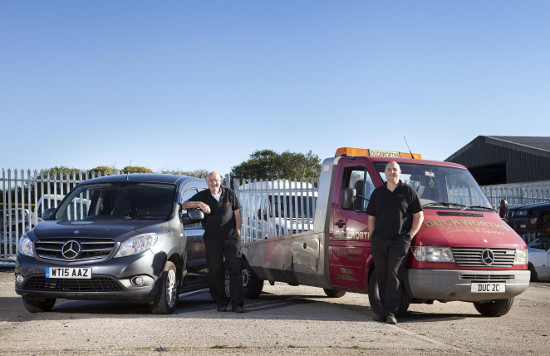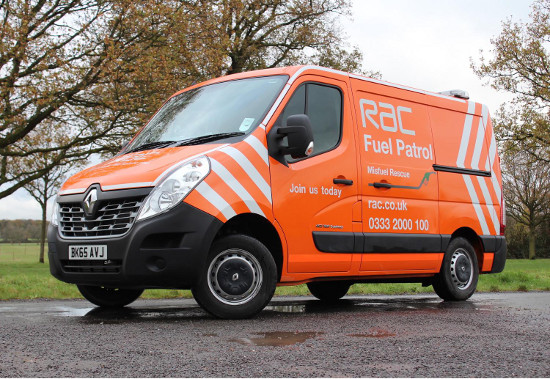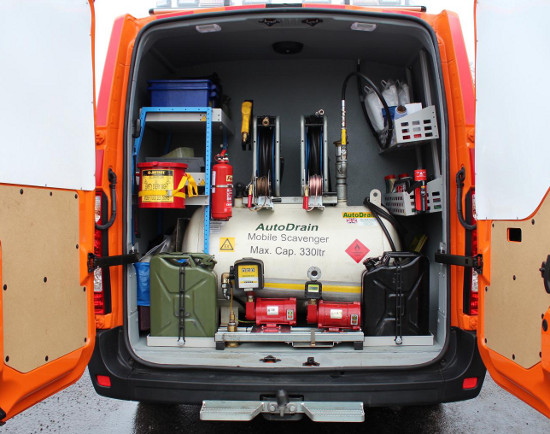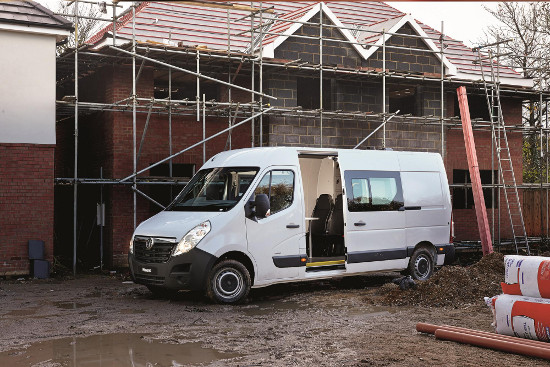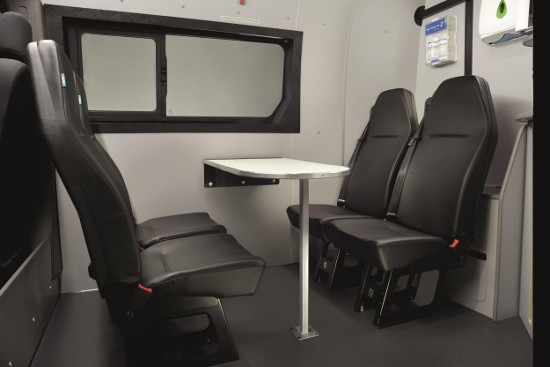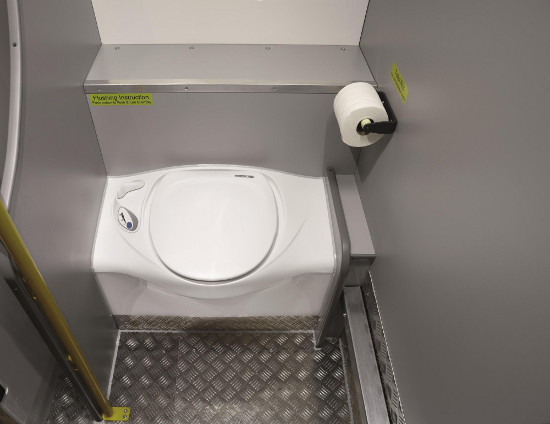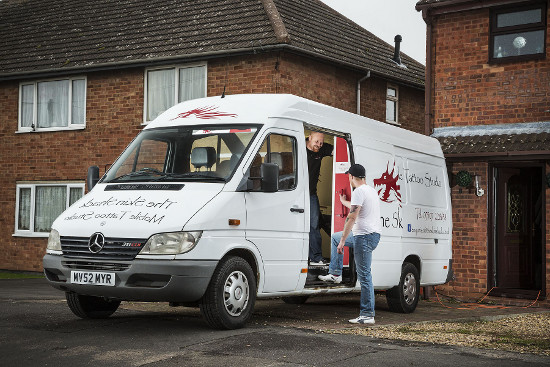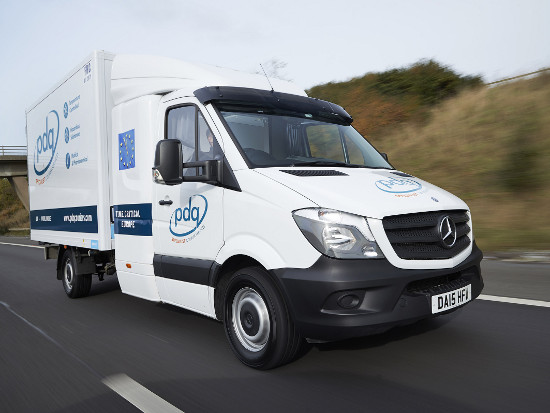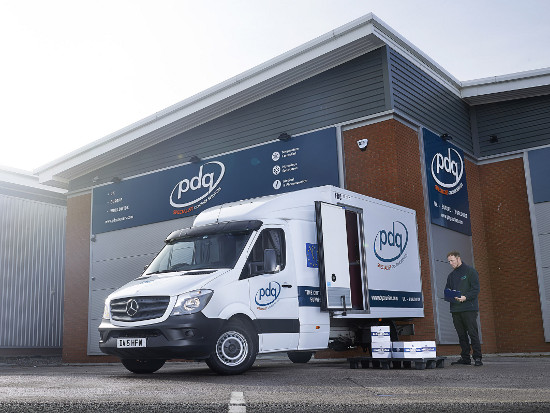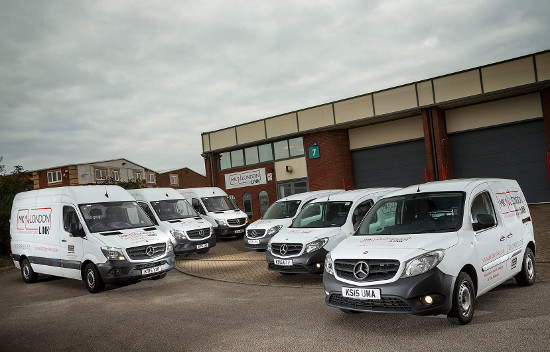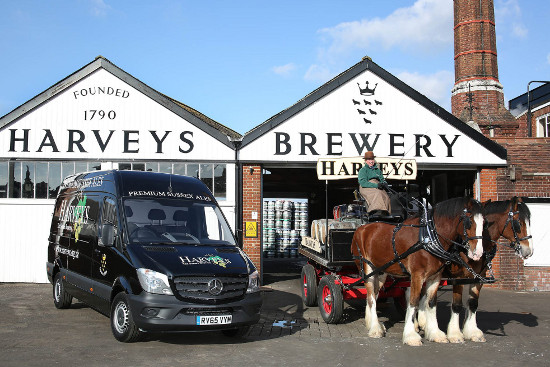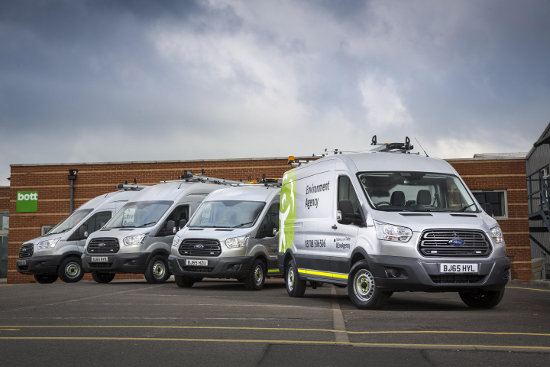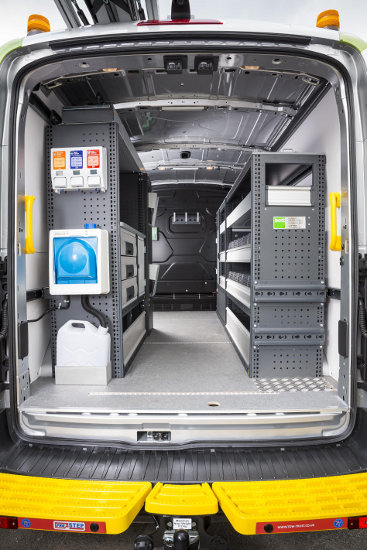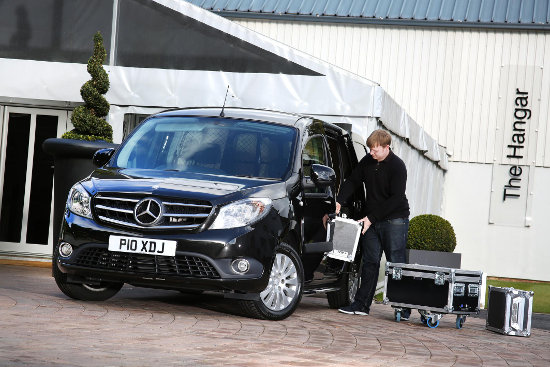Public sector budgets are being cut all round. It’s also interesting to learn that the number of call outs the UK’s fire services receive to serious fires is falling.
As a result, John McGauley, who is managing director of specialist vehicle converter PIckup Systems, believe that the traditional HGV-based fire appliance is sometimes overkill for the uses to which it it put. Mr McGauley reckons many fire services could manage quite well and save cash by switching to smaller models.
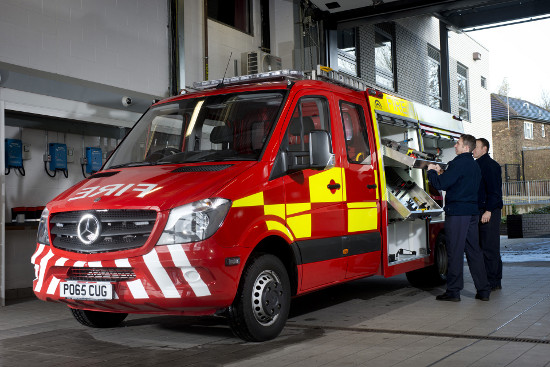
The Burnley, Lancashire-based firm has just launched a new fire-fighting concept vehicle, based on the Mercedes-Benz Sprinter.
The prototype ‘Compac’ vehicle was built on a 5.0-tonne Sprinter 519 CDI chassis cab with a crew cab, which was supplied by Dealer Ciceley Commercials.

The Sprinter Compac is powered by a 190 hp Euro VI engine, which drives through an automatic or six-speed manual transmission, and has a factory-built steel crew cab with seating for up to five firefighters.
Its body is constructed from high-strength polypropylene and includes lockers and slide-and-tilt drawers to carry tools and equipment safely and securely, as well as an 800-litre water tank and Godiva KP2 PTO-powered pump. A nine-metre ladder is stowed on the roof.
“The vehicle is just like a standard fire tender, but downsized,” continued Mr McGauley. “It can easily cope with the majority of fire situations and is also well suited for responding to road traffic collisions and water rescues. It really comes into its own, though, when attending incidents in areas where access is restricted, such as tight inner-city streets or narrow country lanes.
“At the same time its lower initial purchase price, and greatly improved maintenance costs and fuel economy, mean it can be as much as 60% cheaper to operate than a traditional truck-based fire engine.”
I don’t know enough about fire work to know whether using one or more of these van conversions in place of a traditional fire engine would compromise safety. I suspect there may be several conflicting views on this. However, it seems that fire services across the UK are interest in finding out more.
Pickup Systems has already presented the Sprinter Compac at the Emergency Services Show, at the NEC in Birmingham, and is now touring the country carrying out demonstrations.
“Our vehicle has generated a real buzz of interest and is in great demand from fire and rescue services all over Britain who want to take a closer look at it,” said Mr McGauley.

